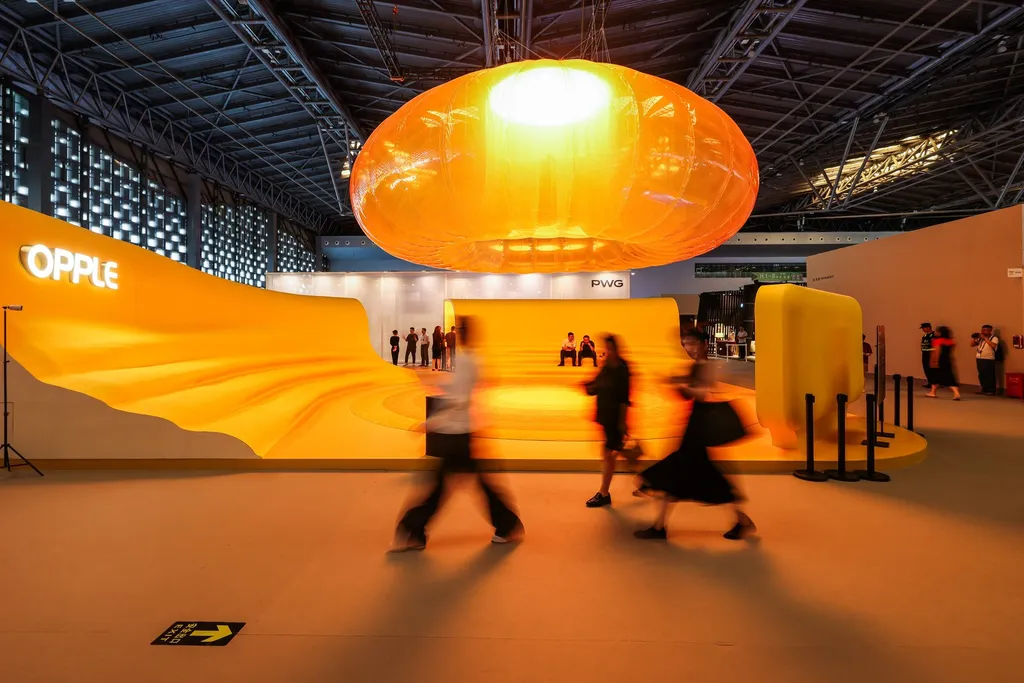China’s automotive industry is growing with confidence, and the Jaecoo J7 is a prime example of this new wave. Launched as part of Chery Automobile’s premium sub-brand, the J7 is often nicknamed the “Chinese Range Rover” for its strikingly familiar upscale SUV presence. Jaecoo is a relatively new nameplate abroad, but it originates from Chery, China’s second-largest car company, which is leveraging decades of experience to create globally ready brands. Jaecoo is being introduced alongside its sister brand, Omoda, in markets such as Europe and Australia, with dozens of dealerships already established in the UK alone. This newcomer isn’t shy about taking on established Western rivals, at least on paper. But is the Jaecoo J7 truly a premium SUV contender or just a knock-off riding on Range Rover’s coattails? The answer, as our in-depth analysis reveals, is more nuanced, raising as many questions as it answers about design originality, ethics, and China’s rapidly evolving automotive market.
One look at the Jaecoo J7 and it’s easy to see why uninitiated observers might mistake it for a Range Rover at first glance. The J7’s designers took inspiration from the British luxury marque: “Hints of Velar here. Traces of Evoque there,” as one reviewer quipped. Signature JLR (Jaguar Land Rover) design cues are evident – from the continuous rear light bar and slim LED headlamps to the contrast-colored roof with hidden pillars (a floating roof effect). Even the door handles pop out electrically when unlocked, then retract flush into the body – a flourish Range Rover popularized in recent models. The overall silhouette, with its square stance and high beltline, checks all the trendy SUV boxes. In short, the J7 “ticks off the tropes” of contemporary luxury SUVs, borrowing familiar elements that exude a semblance of gravitas.
That said, the Jaecoo J7 isn’t an exact copycat; it’s more of a thoughtful remix. Commentators note that while it shamelessly references Range Rover’s style, it’s “by no means a straight copy, more of a collage of familiar SUV elements assembled into something with a semblance of gravitas”. In other words, the J7 blends design influences (as many cars do these days) rather than cloning any single model outright. The result is undeniably handsome in its own right. In a sleek silver or black paint job, the J7 has the kind of upscale, modern SUV aesthetic that could easily pass for a luxury-branded vehicle to the casual eye. It’s only upon closer inspection that uniqueness (or lack thereof) becomes a point of debate. Jaecoo’s official design philosophy is stated as “traditional elegance combined with modern technology,” which in practice translates to strong hints of Land Rover, notably the gleaming, upright grille reminiscent of a cast-iron radiator, combined with crisp LED lighting and chunky 19-inch wheels.
@omodajaecoo.malaysia Built for off-road adventures, the J7 is sleek, powerful, and ready to take on any and all terrains. #JAECOOMY #FromClassicBeyondClassic #PremiumOffRoadSUV #JAECOOJ7
♬ original sound – Jaecoo Malaysia – OMODA JAECOO Malaysia
The interior design continues this narrative of familiar luxury at a budget. Climb inside, and you’re greeted by a thoroughly modern cabin that wouldn’t look out of place in a high-end European SUV. A massive 14.8-inch portrait touchscreen dominates the center console, paired with a 10.25-inch digital instrument cluster – a setup designed for tech-savvy buyers. The minimal dashboard layout, ambient lighting strips, and panoramic sunroof create a premium ambiance. Materials include convincingly supple leatherette (synthetic leather) on the seats and generous soft-touch surfaces. Sony even supplies an 8-speaker audio system as standard in upper trims, and features like a head-up display and 360° surround-view cameras (which “wouldn’t have been out of place on a Rolls-Royce only a few years ago”) come included. It’s an environment carefully crafted to feel luxurious, even if some elements betray cost-cutting; for instance, certain switchgear or interface responses that aren’t as polished as those in a luxury vehicle, such as a Land Rover. Still, for a car priced around £30,000 (approx. USD 37,000) – less than half the cost of a comparable Range Rover Velar – the J7’s design and feature content deliver serious bang for the buck.
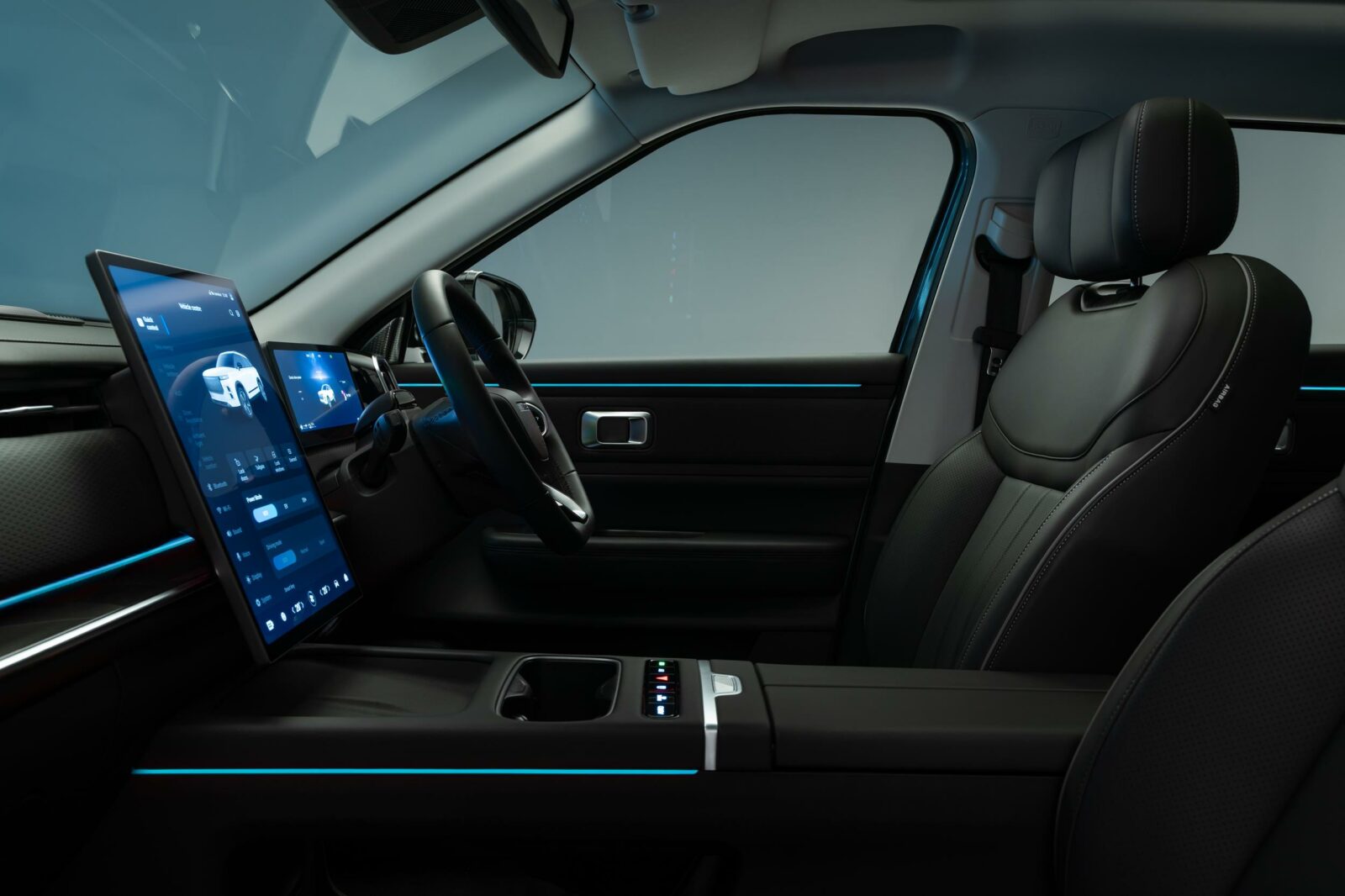
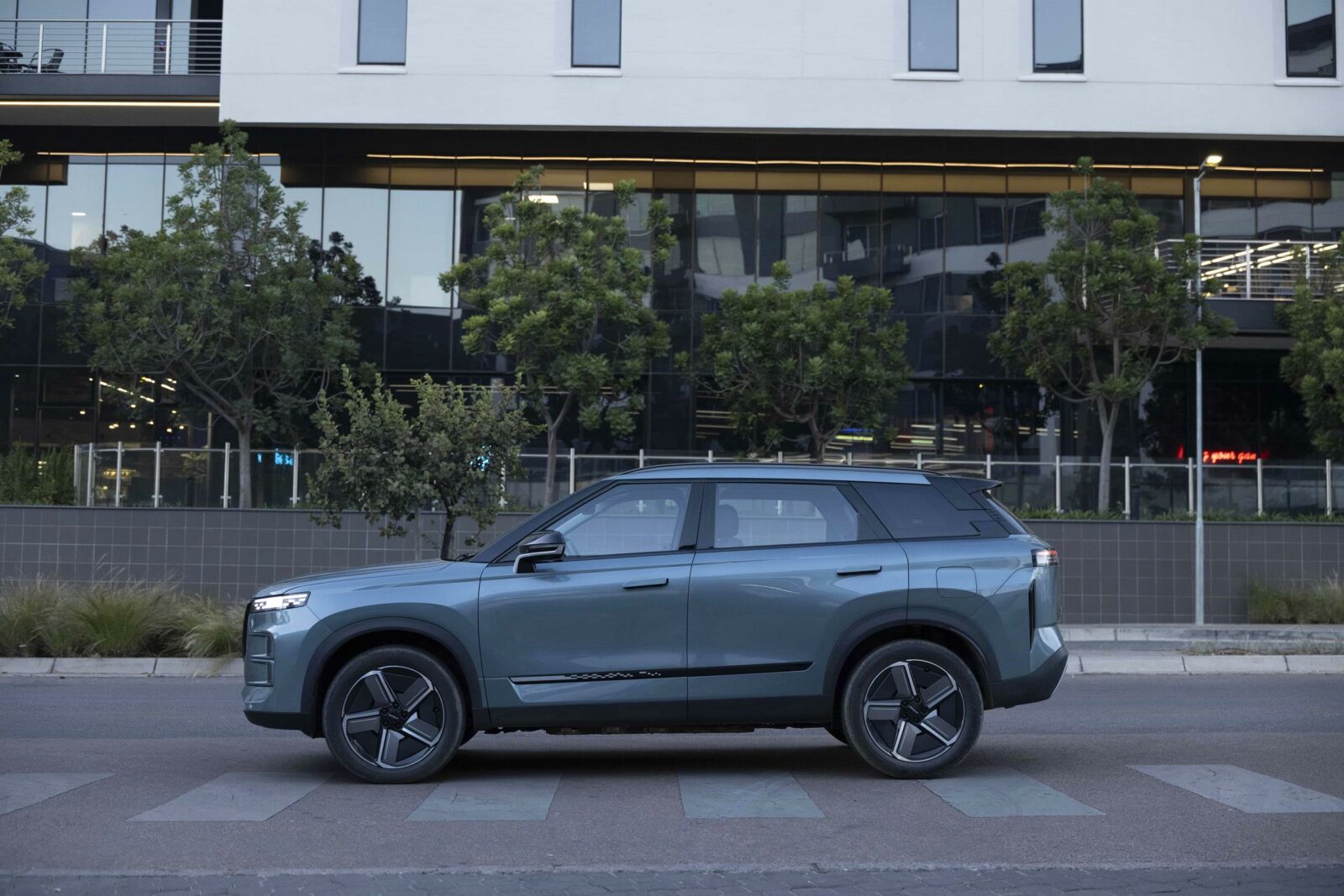
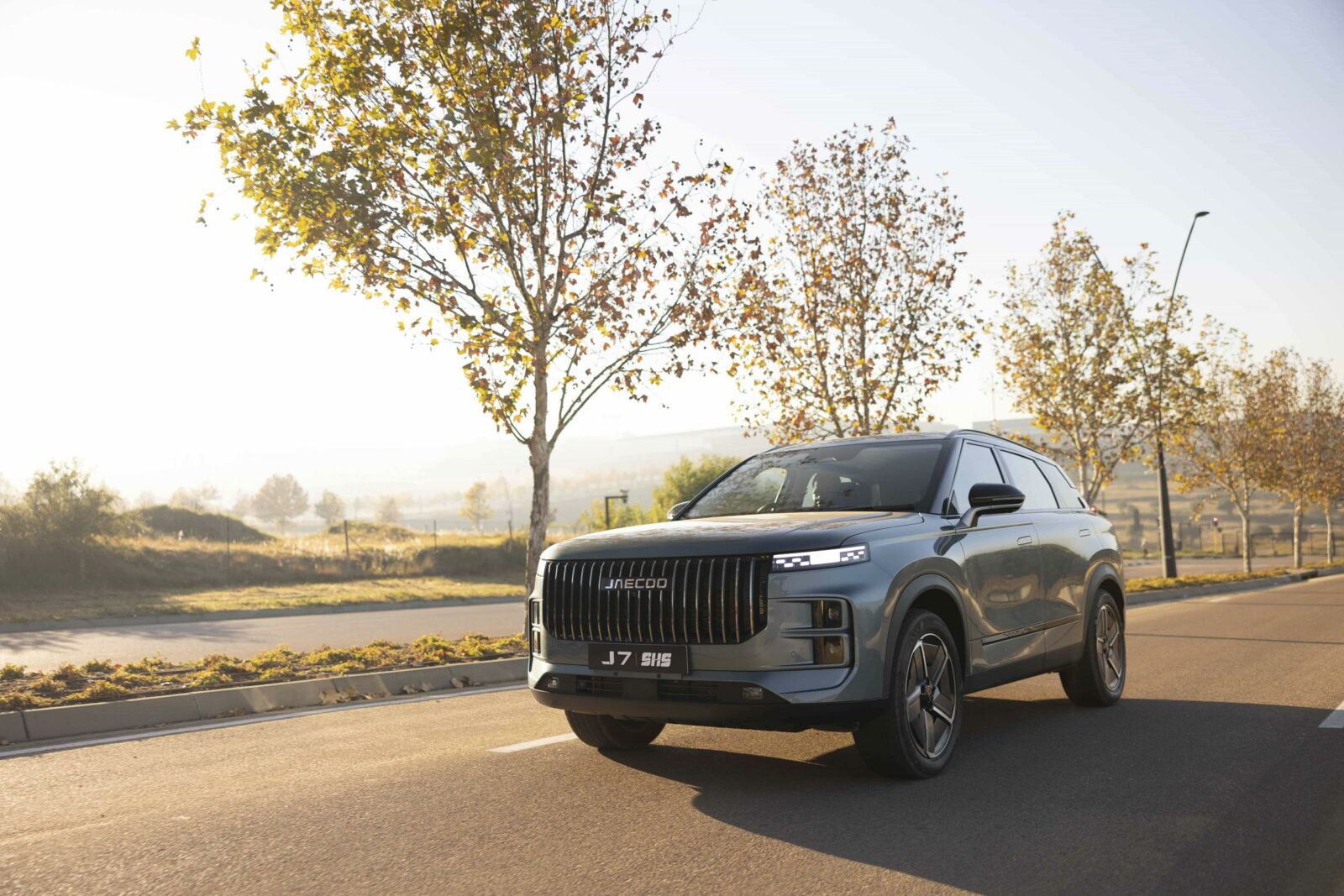
Performance and Technology: Comparing East and West
Don’t let the Range Rover-esque looks fool you – under the skin, the Jaecoo J7 takes a very different approach from its British muses. The flagship J7 SHS (Super Hybrid System) model is powered by a high-tech plug-in hybrid drivetrain built for efficiency. It combines a turbocharged 1.5-liter four-cylinder petrol engine with a 150 kW electric motor, drawing power from an 18.3 kWh Lithium-Iron-Phosphate (LFP) battery. Power is fed through a single-speed Dedicated Hybrid Transmission (DHT) optimized for seamless switching between EV and hybrid modes. The result is a total output of about 204 bhp (152 kW) – modest by luxury SUV standards – but with the benefit of an impressive 90 km (56 miles) of pure-electric range on a full charge. That all-electric range is enough to cover most daily commutes and errands without sipping a drop of petrol, making the J7 SHS extremely frugal in urban use. In fact, Jaecoo touts an almost unbelievable fuel economy figure of 1.0 L/100km (~282 mpg) in hybrid mode, thanks to the extensive EV driving capability (a number obtained via optimistic testing standards, but still indicative of stellar efficiency).
Crucially, the J7’s hybrid system is engineered to be user-friendly. It will always reserve some battery charge (never dropping to 0%) so that you have electric boost available when needed and can even drive in EV mode on demand. Charging the battery is convenient: the J7 supports DC fast charging of up to 40 kW, allowing for a quick recharge from 30% to 80% in approximately 20 minutes – perfect for a coffee break top-up. (For home use, an AC wallbox takes roughly 6.5 hours for a full charge.) Notably, the J7 even offers vehicle-to-load functionality, effectively transforming the car into a 3.3 kW power bank on wheels for powering external devices or appliances. These tech features demonstrate that Jaecoo isn’t just imitating the style of Western SUVs; it’s also adopting cutting-edge electric-hybrid technology where it counts.
By contrast, what does a Range Rover usually have under the hood? Traditionally, Range Rovers (even the compact Evoque and Velar) have relied on larger-displacement engines – 2.0-liter turbo fours at a minimum, often 3.0-liter six-cylinders or even V8s in high-end models – emphasizing power and prestige over fuel efficiency. For example, the Range Rover Velar’s available P400e plug-in hybrid combines a 2.0L engine with a powerful motor, yielding a total output of nearly 400 horsepower. However, it achieves only about 64 km (40 miles) of EV range in ideal conditions. More commonly, Range Rovers are equipped with six- or eight-cylinder engines and mild-hybrid systems, prioritizing smooth performance and speed. This highlights a key philosophical difference: Jaecoo has opted to “show up to a gunfight with a water pistol,” as one analyst cheekily put it. The J7’s 1.5L hybrid may sound underpowered by Western luxury standards. Still, it plays to a future-focused strength – efficiency and sufficient real-world performance, rather than the traditional luxury trope of excess horsepower. In day-to-day driving, the J7 SHS’s ~8.5-second 0–100 km/h (0–62 mph) acceleration is perfectly adequate, even if it won’t win drag races. The electric motor’s instant torque makes the car feel zippy off the line, masking the small engine’s turbo lag and delivering a responsive city driving experience. On the highway, the petrol engine can directly drive the wheels at higher speeds (above ~80 km/h) for efficient cruising. Combined with its generous total range (~1200 km with both gas and electric), the J7 is also an excellent long-distance cruiser.
In terms of driving dynamics, no one claims the J7 outperforms a Range Rover in terms of off-road mastery or high-speed handling. Land Rover’s decades of off-road heritage (think locking differentials, air suspension, and Terrain Response modes, among others) still give Range Rover models an edge when the going gets tough. The Jaecoo J7 does try to cover the basics: the all-wheel-drive versions offer seven drive modes (including Sand, Snow, and Mud) and can ford through 0.6 m of water, with respectable approach and departure angles, and even hill descent control. For 99% of typical SUV use – city streets, motorways, and the occasional dirt road – the J7 is more than capable. But it likely wouldn’t out-rock-crawl a genuine Range Rover on a challenging trail, nor does it need to for its intended audience. The ride quality on the J7 is tuned on the firm side (likely due to those big wheels and budget constraints), yet reviews find it well-damped and quiet, with minimal wind or road noise – again, punching above its price class in refinement. Range Rover drivers might miss the pillowy magic-carpet feel of an air suspension (the J7 sticks with conventional springs and shocks). Still, many buyers coming from mainstream cars will find Jaecoo’s ride perfectly comfortable and the handling solidly predictable.
Questioning Originality and Ethics
Whenever a new Chinese car bears a resemblance to a famous Western model, the inevitable question arises: Is it a copy? In the past, Chinese automakers earned a reputation for blatant copycat designs – the infamous Landwind X7, for instance, was a near-clone of the Range Rover Evoque, sold at a fraction of the price. (A Beijing court eventually ruled that the X7 had five specific features directly copied from the Evoque and ordered production halted.) Incidents like that cast a long shadow over Chinese brands, raising ethical concerns about intellectual property and design plagiarism. It’s a sensitive subject: Western companies spend fortunes on design, only to see look-alikes appear in China, causing understandable frustration.
So, where does the Jaecoo J7 stand on the originality scale? On one hand, as discussed, the Range Rover influence is unmistakable – from the overall silhouette down to details like the floating roof and tail-light motifs, the J7 wears its inspiration on its sleeve. This was likely a calculated decision: evoking a Range Rover immediately communicates “premium SUV” to consumers, a visual shorthand that helps a new brand like Jaecoo establish credibility. Many mainstream automakers have taken design cues from luxury brands over the years (look at how many sedans emulated the Mercedes S-Class’s grille or how SUVs across the board adopted Land Rover-esque cladding). In that sense, Jaecoo is playing by the industry’s unwritten rules of homage, rather than engaging in outright piracy. Indeed, reviewers generally agree that the J7 stops short of being a knock-off. It’s more like an amalgam of well-known design elements, reassembled into a new package, as one writer diplomatically called it “a collage of familiar SUV elements” with enough of a unique mix to avoid feeling like a counterfeit. There’s no single Range Rover model that the J7 copies line-for-line; instead, it’s as if the designers took the greatest hits of Range Rover’s styling and remixed them with some original notes. You could say the ethics of the J7’s design sit in a grey area: it flirts with imitation but also demonstrates that Chinese brands have learned to add their twist to the formula, however subtle.
It’s also worth noting the irony that Jaguar Land Rover (maker of Range Rover) and Jaecoo’s parent company, Chery, are not strangers on opposite sides of a battlefield; they are business partners. Chery and JLR have a joint venture in China (producing Land Rover models for the Chinese market), and JLR has even licensed its old “Freelander” nameplate to Chery for a future line of vehicles built on a Chery electric platform. In light of this collaboration, the idea of Jaecoo as a “Range Rover copy” becomes more complex. Is it unethical for Chery’s sub-brand to channel Range Rover styling cues when Chery builds actual Range Rovers under license? Or is it simply an inevitable cross-pollination, given the globalized nature of car design? These questions don’t have easy answers, but they highlight how blurred the lines have become. The global car industry is increasingly intertwined – Western firms invest in China, Chinese designers work in European studios, and consumers on both sides are starting to see the results. Perhaps the Jaecoo J7 exemplifies this blur: a product of China’s industry that openly echoes British design, yet stands as its effort to create a new brand identity. It challenges us to consider where the line between inspiration and imitation lies, and whether that line shifts when the upstart begins to rival the original seriously.
China’s Automotive Rise
The emergence of Jaecoo is just one piece of a much larger trend. China’s car industry is booming, not only in terms of sheer volume but also in terms of sophistication. Once dismissed by Western consumers, Chinese brands now routinely launch new models that can match or even exceed the specs of European, Japanese, and American competitors, usually at a lower price point. It seems like “every other month there is a new nameplate from China to get familiar with,” as one observer wryly noted. Giants like Great Wall Motor have spun off sub-brands (Haval, Tank, Ora, etc.), and Chery itself has Omoda, Jaecoo, Jetour, and more. An “avalanche of new models and brands” is flooding the market, especially in the EV and hybrid segment. This rapid proliferation is not random; it’s backed by significant investment in R&D and a strategic push to innovate. Chery, for example, boasts a design team of 500+ people, including international talent, and maintains R&D centers in Europe (one in Germany) to stay on the cutting edge. In a telling remark, Jaecoo’s designers mentioned how quickly decisions can be made in companies like Chery, thanks to a “flexible and fluid” culture that encourages speedy innovation. While legacy Western automakers can take years to develop a new model, Chinese firms are significantly compressing development cycles, sometimes launching updated models every year.
What does this mean for consumers, especially those in the West? For one, we’re beginning to see features in Chinese cars that might surprise those used to traditional brands. The Jaecoo J7 itself offers things like a 50W wireless charger pad and the ability to power external devices from the car – small perks that cater to a tech-rich lifestyle. Other Chinese models (from brands like NIO, Xpeng, BYD, and Lynk & Co) have pushed the envelope with innovations such as built-in dashcams and driver-facing cameras, in-car karaoke systems, air purifiers, and even battery swapping technology for EVs. Many of these features are typical or expected in the Chinese domestic market, yet are virtually unheard of in equivalent Western models. It underscores how Chinese consumers (especially younger ones) demand a very high level of technology integration and are often early adopters of new ideas. Meanwhile, electrification is mainstream in China – numerous plug-in hybrids, such as the J7, boast electric ranges of over 100 km, and pure electric vehicles from China are achieving world-class range and performance.
For Western audiences, it serves as a wake-up call. The “Chinese Range Rover” label might carry a whiff of dismissiveness (implying it’s an imitator). Still, the reality is that vehicles like the Jaecoo J7 are part of China’s evolution from imitator to innovator. The country is now the world’s largest car market and a leader in electrified vehicle tech. Chinese carmakers are expanding globally; Chery is even scouting locations for a new factory in Europe. All of this suggests that competition in the automotive industry is intensifying. Legacy brands are taking notice – and perhaps feeling “sleepless nights over the Chinese invasion”, as some in the industry joke. In Europe and beyond, consumers will soon have far more choices, with Chinese SUVs, sedans, and EVs vying for their attention not as cheap knock-offs, but as value-packed alternatives.
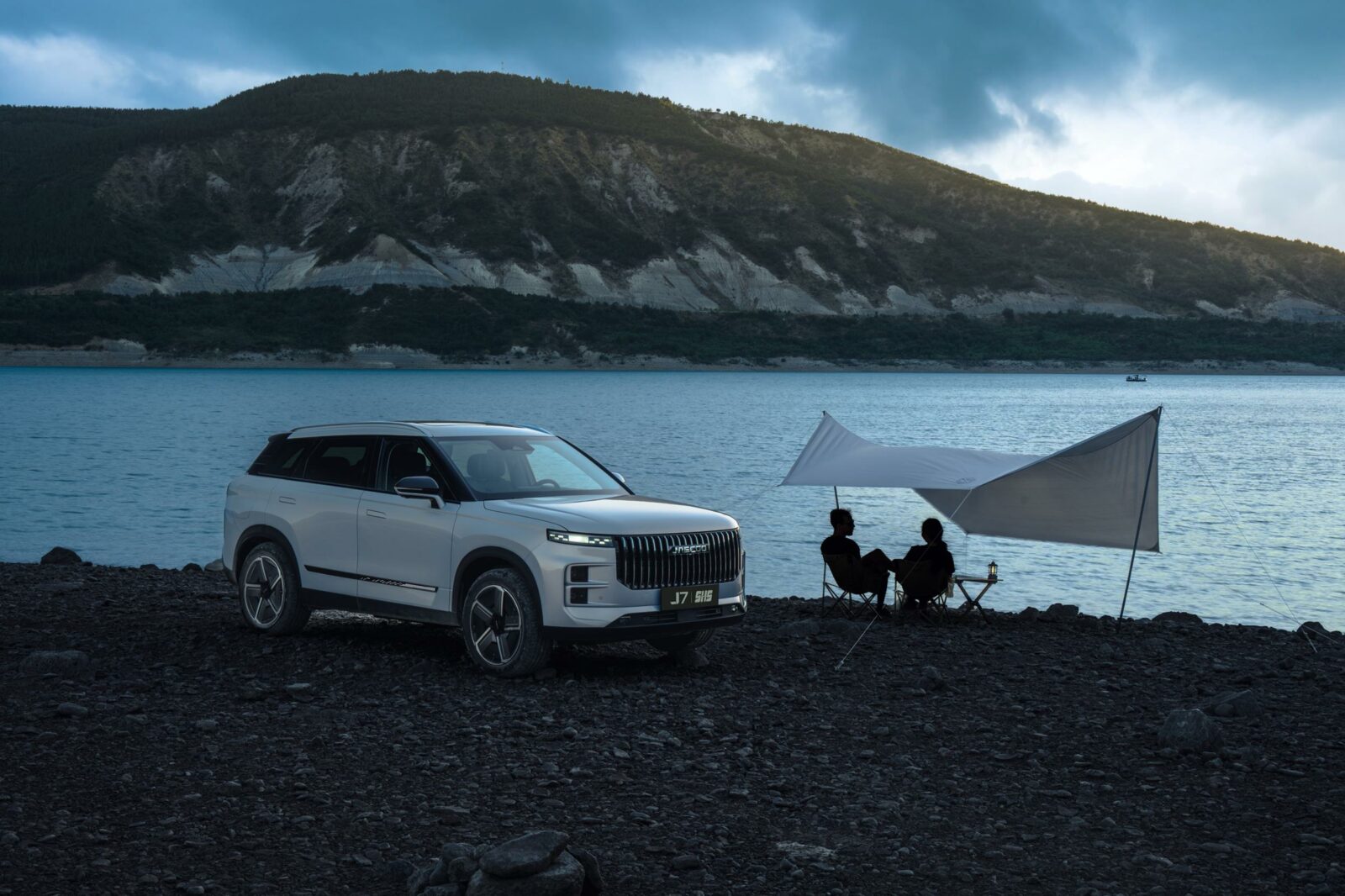
A Copycat or a Contender?
Writing for a design-focused audience, one can’t help but wonder: Is the Jaecoo J7 truly deserving of the Range Rover comparison, or is that moniker selling it short? In truth, the J7 sits at an intersection of imitation and innovation. It delivers “Range Rover taste on a budget,” as one review put it, meaning it offers the style, space, and much of the gadgetry of a luxury SUV at a price point accessible to middle-class buyers. For consumers who care more about features and functionality than the badge on the hood, the J7 is indeed “just the ticket” – an appealing, no-nonsense package without the ego tax of a premium logo. It raises some intriguing questions: How much are we paying for the badge when we buy a luxury car, if a newcomer can deliver similar comfort and tech for half the price? Are we entering an era where design and technology have been so democratized that even a brand-new player can come terrifyingly close to the big boys in terms of product offerings? The Jaecoo J7 suggests the answer might be yes.
Of course, brand heritage and emotional appeal are not to be dismissed. A Range Rover’s identity – forged through decades of history, British aristocratic associations, and proven capability – is not something you can clone overnight. Jaecoo still has everything to prove in terms of long-term quality, dealer service, and brand cachet. Some skeptical eyes will undoubtedly continue to view the J7 as “just a Chinese copy” until proven otherwise. However, after examining its design, engineering, and the context of its creation, it’s clear that the J7 is a statement that Chinese automakers have leveled up. It stands on the shoulders of giants (with Range Rover being one of them) but also signifies a new phase where Chinese brands aim to redefine the meaning of premium on their terms.
In the end, the Jaecoo J7 might not break new ground in originality, but it certainly breaks the mold of what people expect from a Chinese car. It’s a rolling embodiment of China’s industrial rise – competent, confident, and unafraid to go toe-to-toe with Western icons. As China’s influence in the auto world grows, perhaps the most intelligent question to ask is not whether the J7 is a copy of the Range Rover, but whether the next Range Rover might need to learn a thing or two from the J7. The global automotive playing field is being leveled, and designs, ideas, and innovations are flowing East to West as much as West to East. Today, a “Chinese Range Rover” might sound like a novelty, but tomorrow it could be seen as a wise choice.
Photos Courtesy of JAECOO







